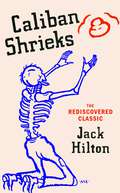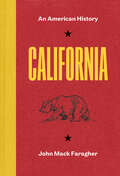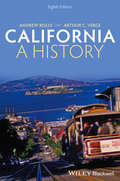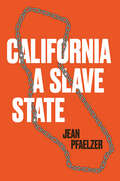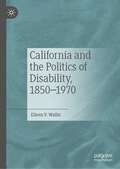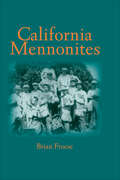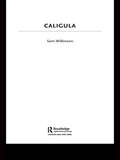- Table View
- List View
Caliban Shrieks: The ‘breathless and dizzying’ rediscovered classic novel
by Jack HiltonA lyrical tour of life as a young working-class man born into the first days of the 20th century, Caliban Shrieks is a lost masterpiece of 1930s British literature.WITH NEW INTRODUCTIONS BY ANDREW McMILLAN AND JACK CHADWICKCaliban Shrieks’ narrator went from a childhood of poverty, yet joy and freedom, to the punishing grind of factory life and the idiocy of being sent blindly into war. He was turned out of the army a vagrant - seeing England from city to city, county to county - before being thrust back into an uncertain cycle of working life as it unfolded in the post-war years.A story of men and women lost, wandering – and angrily dreaming of a better, fairer England, Hilton’s autobiographical novel is a bold modernist retelling of the myth of how we find ourselves disenfranchised from the world and sold into a slavery of our making.Lost to time, only to be rediscovered again in the Salford's Working Class Movement Library in 2022, Caliban Shrieks is a working-class masterpiece of British literature, and continues to speak as brash and impassioned as it did on its first rave publication in 1935.'Witty and unusual' George Orwell'Magnificent' W H Auden
Calico Christmas at Dry Creek (Mills & Boon Historical): Calico Christmas At Dry Creek Redeeming Gabriel
by Janet TronstadIndulge your fantasies of delicious Regency Rakes, fierce Viking warriors and rugged Highlanders. Be swept away into a world of intense passion, lavish settings and romance that burns brightly through the centuries The Montana territory was supposed to be the l of dreams for Elizabeth O'Brian.
California: An American History
by John Mack FaragherA concise and lively history of California, the most multicultural state in the nation “A masterful history.” —Kirkus Reviews (starred review) “Faragher takes the reader on a captivating journey through myriad twists and turns of California’s multicultural history, enlivened by stories of people who rarely penetrate our traditional state chronicles.”—Carlos E. Cortés, University of California, Riverside California is the most multicultural state in the nation. As John Mack Faragher argues in this concise and lively history, that is nothing new. California's natural variety has always supported diversity, including Native peoples speaking dozens of distinct languages, Spanish and Mexican colonists, gold seekers from all corners of the globe, and successive migrant waves from the eastern states, Europe, Latin America, Asia, and the Pacific Islands. Beautifully crafted and elegantly written, Faragher tells the stories of a colorful cast of characters, some famous, others mostly unknown, including African American Archy Lee, who sued for his freedom; Sinkyone Indian woman Sally Bell, who survived genocide; and Jewish schoolgirl Marilyn Greene, who spoke up for her Japanese friends after Pearl Harbor. California's multicultural diversity often led to conflict, turmoil, and violence, but also to invention, improvisation, and a struggle for multicultural democracy.
California: A History
by Andrew Rolle Arthur C. VergeThe eighth edition of California: A History covers the entire scope of the history of the Golden State, from before first contact with Europeans through the present; an accessible and compelling narrative that comprises the stories of the many diverse peoples who have called, and currently do call, California home. Explores the latest developments relating to California’s immigration, energy, environment, and transportation concerns Features concise chapters and a narrative approach along with numerous maps, photographs, and new graphic features to facilitate student comprehension Offers illuminating insights into the significant events and people that shaped the lengthy and complex history of a state that has become synonymous with the American dream Includes discussion of recent – and uniquely Californian – social trends connecting Hollywood, social media, and Silicon Valley – and most recently "Silicon Beach"
California: A History
by Andrew Rolle Arthur C. VergeThe eighth edition of California: A History covers the entire scope of the history of the Golden State, from before first contact with Europeans through the present; an accessible and compelling narrative that comprises the stories of the many diverse peoples who have called, and currently do call, California home. Explores the latest developments relating to California’s immigration, energy, environment, and transportation concerns Features concise chapters and a narrative approach along with numerous maps, photographs, and new graphic features to facilitate student comprehension Offers illuminating insights into the significant events and people that shaped the lengthy and complex history of a state that has become synonymous with the American dream Includes discussion of recent – and uniquely Californian – social trends connecting Hollywood, social media, and Silicon Valley – and most recently "Silicon Beach"
California, a Slave State (The Lamar Series in Western History)
by Jean PfaelzerThe untold history of slavery and resistance in California, from the Spanish missions, indentured Native American ranch hands, Indian boarding schools, Black miners, kidnapped Chinese prostitutes, and convict laborers to victims of modern trafficking “A searing survey of ‘250 years of human bondage’ in what is now the state of California. . . . Readers will be outraged.”—Publishers Weekly California owes its origins and sunny prosperity to slavery. Spanish invaders captured Indigenous people to build the chain of Catholic missions. Russian otter hunters shipped Alaska Natives—the first slaves transported into California—and launched a Pacific slave triangle to China. Plantation slaves were marched across the plains for the Gold Rush. San Quentin Prison incubated California’s carceral state. Kidnapped Chinese girls were sold in caged brothels in early San Francisco. Indian boarding schools supplied new farms and hotels with unfree child workers. By looking west to California, Jean Pfaelzer upends our understanding of slavery as a North-South struggle and reveals how the enslaved in California fought, fled, and resisted human bondage. In unyielding research and vivid interviews, Pfaelzer exposes how California gorged on slavery, an appetite that persists today in a global trade in human beings lured by promises of jobs but who instead are imprisoned in sweatshops and remote marijuana grows, or sold as nannies and sex workers. Slavery shreds California’s utopian brand, rewrites our understanding of the West, and redefines America’s uneasy paths to freedom.
California And The Fictions Of Capital
by George L. HendersonBetween the frequently recounted events of the Gold Rush and the Great Depression stretches a period of California history that is equally crucial but less often acknowledged. In his fresh, synthetic consideration of these in-between years, George L. Henderson points specifically to the take-off of California's rural juggernaut between the 1880s and middle 1920s--the upward spiral of city bids for country dollars and rural bids for urban investments. These decades were salve for mining's risky finances yet groundwork for the chaotic 1930s. Moreover, Henderson argues that much like the two important periods which framed it, this era produced a cultural and literary apparatus that attempted to grapple with capital's machinations, if only to legitimate them in the end. Central to California and the Fictions of Capital is a theory of how the circulation of capital wove itself into agriculture. The book asks why it mattered to capital that agriculture was based in Nature, and then explores the procedures through which images of Nature became central to capitalism's story of itself. What unique possibilities did Nature offer to circuits of capital and what was their role in suturing the urban and rural together? How did boom and bust intervene and set the pace for regional change? How was capital linked to the racializing of working bodies? And why was the capitalist imperative expressed in landscape alterations like irrigation? Such are the key questions informing this bold, far-reaching volume. Beyond political economy, the book also looks to the rural juggernaut's cultural and literary work, which was stamped by celebratory, if fretful, ruminations. In all sorts of texts--but especially in novels by Frank Norris, Mary Austin, Harold Bell Wright, and many other writers--difficult questions surfaced. Capital was seen in terms of its spillage into rural frontiers, just as rural frontiers were seen in terms of movements of capital. Capital was the new geography of money. But for whom did it work? Which identities did it favor? In mapping the real and imaginary realms that capital occupied, Henderson locates the banker-, land developer-, and engineer-heroes of California fiction as well as the fictionalized "new woman" of the capitalist, agrarian West. He unravels the colliding representations of race, gender, and class, while linking their treatment to the naturalizing rhetoric of capital's agrarian turn. In part a tour of California as a virtual laboratory for refining the circulation of capital, and in part an investigation of how the state's literati, with rare exception, reconceived economy in the name of class, gender, and racial privilege, this study will appeal to all students and scholars of California's--and the American West's--economic, environmental, and cultural past.
California and the Fictions of Capital (Commonwealth Center Studies in American Culture)
by George L. HendersonBetween the frequently recounted events of the Gold Rush and the Great Depression stretches a period of California history that is equally crucial but less often acknowledged. In his fresh, synthetic consideration of these in-between years, George L. Henderson points specifically to the take-off of California's rural juggernaut between the 1880s and middle 1920s--the upward spiral of city bids for country dollars and rural bids for urban investments. These decades were salve for mining's risky finances yet groundwork for the chaotic 1930s. Moreover, Henderson argues that much like the two important periods which framed it, this era produced a cultural and literary apparatus that attempted to grapple with capital's machinations, if only to legitimate them in the end. Central to California and the Fictions of Capital is a theory of how the circulation of capital wove itself into agriculture. The book asks why it mattered to capital that agriculture was based in Nature, and then explores the procedures through which images of Nature became central to capitalism's story of itself. What unique possibilities did Nature offer to circuits of capital and what was their role in suturing the urban and rural together? How did boom and bust intervene and set the pace for regional change? How was capital linked to the racializing of working bodies? And why was the capitalist imperative expressed in landscape alterations like irrigation? Such are the key questions informing this bold, far-reaching volume. Beyond political economy, the book also looks to the rural juggernaut's cultural and literary work, which was stamped by celebratory, if fretful, ruminations. In all sorts of texts--but especially in novels by Frank Norris, Mary Austin, Harold Bell Wright, and many other writers--difficult questions surfaced. Capital was seen in terms of its spillage into rural frontiers, just as rural frontiers were seen in terms of movements of capital. Capital was the new geography of money. But for whom did it work? Which identities did it favor? In mapping the real and imaginary realms that capital occupied, Henderson locates the banker-, land developer-, and engineer-heroes of California fiction as well as the fictionalized "new woman" of the capitalist, agrarian West. He unravels the colliding representations of race, gender, and class, while linking their treatment to the naturalizing rhetoric of capital's agrarian turn. In part a tour of California as a virtual laboratory for refining the circulation of capital, and in part an investigation of how the state's literati, with rare exception, reconceived economy in the name of class, gender, and racial privilege, this study will appeal to all students and scholars of California's--and the American West's--economic, environmental, and cultural past.
California and the Politics of Disability, 1850–1970
by Eileen V. WallisThis book explores the political, legal, medical, and social battles that led to the widespread institutionalization of Californians with disabilities from the gold rush to the 1970s. By the early twentieth century, most American states had specialized facilities dedicated to both the care and the control of individuals with disabilities. Institutions reflect the lived historical experience of many Americans with disabilities in this era. Yet we know relatively little about how such state institutions fit into specific regional, state, or local contexts west of the Mississippi River; how those contexts shaped how institutions evolved over time; or how regional institutions fit into the USA’s contentious history of care and control of Americans with mental and developmental disabilities. This book examines how medical, social, and political arguments that individuals with disabilities needed to be institutionalized became enshrined in state law in California through the creation of a “bureaucracy of disability.” Using Los Angeles County as a case study, the book also considers how the friction between state and county policy in turn influenced the treatment of individuals within such facilities. Furthermore, the book tracks how the mission and methods of such institutions evolved over time, culminating in the 1960s with the birth of the disability rights movement and the complete rewriting of California’s laws on the treatment and rights of Californians with disabilities. This book is a must-read for those interested in the history of California and the American West and for anyone interested in how the intersections of disability, politics, and activism shaped our historical understanding of life for Americans with disabilities.
California Archaeology
by Michael J. MorattoCalifornia Archaeology provides a compilation of knowledge for archeologists who are not California specialists. This book explains important cultural events and patterns discovered archeologically. Organized into 11 chapters, this book begins with an overview of California's historic and ancient environments as well as the evidence of Pleistocene human activity. This text then examines the glacial and other environmental conditions that would have influenced the origins, adaptations, and spread of the earliest North Americans. Other chapters consider how California's past is relevant to a wider understanding of human behavior. This book discusses as well the perceptions of Central Coast and San Francisco Bay region prehistory that have changed rapidly as a result of intensive fieldwork performed to comply with environmental law. The final chapter deals with the data of historical linguistics, which indicate something of the cultural relationships and events that might have occurred in the past. This book is a valuable resource for archeologists.
California Bungalows of the Twenties
by Henry L. WilsonReprint of rare catalog includes front or front-angled elevations, floor plans and interior sketches for dozens of authentic bungalow designs, many unique to the California landscape. Detailed descriptions point out special features and possibilities of each design, and include estimates of costs. 231 black-and-white illustrations.
California Dreaming (Architectural Design)
by Neil SpillerCalifornia has historically provided a fertile breeding ground for radical modes of architectural thinking, practice and building, which from the 1920s onwards was sparked by the presence of eminent émigré architects. It was also central to the birth of ‘cool’ mid-century Modernism – all in parallel with the intense concentration of design and experimentation in the film, aerospace and tech industries. This AD issue explores the influential formal tropes generated in the nexus between Los Angeles and the Bay Area, as well as the thriving theoretical preoccupations that have brought California's architects global attention. Between Hollywood and the Silicon Valley, this unique context has nurtured and become the platform for those who not only build buildings around the world, but have also founded and directed schools and educated emergent generations of architects. Contributors: Frances Anderton, Jasmine Benyamin, Blaine Brownell, Courtney Coffman, Heather Flood and Aaron Gensler, David Freeland and Brennan Buck, Craig Hodgetts, Max Kuo, Eva Menuhin, Nicole Meyer, Jill Stoner, and Grace Mitchell Tada. Featured architects: Atelier Manferdini, Ball-Nogues Studio, Faulders Studio, FreelandBuck, Hood Design Studio, Oyler Wu Collaborative, Preliminary Research Office, Stereobot, and Synthesis Design + Architecture.
California Earthquakes: Science, Risk, and the Politics of Hazard Mitigation
by Carl-Henry GeschwindIn 1906, after an earthquake wiped out much of San Francisco, leading California officials and scientists described the disaster as a one-time occurrence and assured the public that it had nothing to worry about. California Earthquakes explains how, over time, this attitude changed, and Californians came to accept earthquakes as a significant threat, as well as to understand how science and technology could reduce this threat.Carl-Henry Geschwind tells the story of the small group of scientists and engineers who—in tension with real estate speculators and other pro-growth forces, private and public—developed the scientific and political infrastructure necessary to implement greater earthquake awareness. Through their political connections, these reformers succeeded in building a state apparatus in which regulators could work together with scientists and engineers to reduce earthquake hazards. Geschwind details the conflicts among scientists and engineers about how best to reduce these risks, and he outlines the dramatic twentieth-century advances in our understanding of earthquakes—their causes and how we can try to prepare for them.Tracing the history of seismology and the rise of the regulatory state and of environmental awareness, California Earthquakes tells how earthquake-hazard management came about, why some groups assisted and others fought it, and how scientists and engineers helped shape it.
The California Gold Rush: The Stampede that Changed the World (Critical Moments in American History)
by Mark A. EiflerIn January of 1848, James Marshall discovered gold at Sutter's Mill in the foothills of the Sierra Nevada. For a year afterward, news of this discovery spread outward from California and started a mass migration to the gold fields. Thousands of people from the East Coast aspiring to start new lives in California financed their journey West on the assumption that they would be able to find wealth. Some were successful, many were not, but they all permanently changed the face of the American West. In this text, Mark Eifler examines the experiences of the miners, demonstrates how the gold rush affected the United States, and traces the development of California and the American West in the second half of the nineteenth century. This migration dramatically shifted transportation systems in the US, led to a more powerful federal role in the West, and brought about mining regulation that lasted well into the twentieth century. Primary sources from the era and web materials help readers comprehend what it was like for these nineteenth-century Americans who gambled everything on the pursuit of gold.
The California Gold Rush: The Stampede that Changed the World (Critical Moments in American History)
by Mark A. EiflerIn January of 1848, James Marshall discovered gold at Sutter's Mill in the foothills of the Sierra Nevada. For a year afterward, news of this discovery spread outward from California and started a mass migration to the gold fields. Thousands of people from the East Coast aspiring to start new lives in California financed their journey West on the assumption that they would be able to find wealth. Some were successful, many were not, but they all permanently changed the face of the American West. In this text, Mark Eifler examines the experiences of the miners, demonstrates how the gold rush affected the United States, and traces the development of California and the American West in the second half of the nineteenth century. This migration dramatically shifted transportation systems in the US, led to a more powerful federal role in the West, and brought about mining regulation that lasted well into the twentieth century. Primary sources from the era and web materials help readers comprehend what it was like for these nineteenth-century Americans who gambled everything on the pursuit of gold.
California Mennonites (Young Center Books in Anabaptist and Pietist Studies)
by Brian FroeseBooks about Mennonites have centered primarily on the East Coast and the Midwest, where the majority of Mennonite communities in the United States are located. But these narratives neglect the unique history of the multitude of Mennonites living on the West Coast. In California Mennonites, Brian Froese relies on archival church records to examine the Mennonite experience in the Golden State, from the nineteenth-century migrants who came in search of sunshine and fertile soil to the traditionally agrarian community that struggled with issues of urbanization, race, gender, education, and labor in the twentieth century to the evangelically oriented, partially assimilated Mennonites of today.Froese places Mennonite experiences against a backdrop of major historical events, including World War II and Vietnam, and social issues, from labor disputes to the evolution of mental health care. California Mennonites include people who embrace a range of ideologies: many are historically rooted in the sixteenth-century Reformation ideals of the early Anabaptists (pacifism, congregationalism, discipleship); some embrace twentieth-century American evangelicalism (missions, Billy Graham); and others are committed to a type of social justice that involves forging practical ties to secular government programs while maintaining a quiet connection to religion. Through their experiences of religious diversity, changing demographics, and war, California Mennonites have wrestled with complicated questions of what it means to be American, Mennonite, and modern. This book—the first of its kind—will appeal to historians and religious studies scholars alike.
California Mennonites (Young Center Books in Anabaptist and Pietist Studies)
by Brian FroeseBooks about Mennonites have centered primarily on the East Coast and the Midwest, where the majority of Mennonite communities in the United States are located. But these narratives neglect the unique history of the multitude of Mennonites living on the West Coast. In California Mennonites, Brian Froese relies on archival church records to examine the Mennonite experience in the Golden State, from the nineteenth-century migrants who came in search of sunshine and fertile soil to the traditionally agrarian community that struggled with issues of urbanization, race, gender, education, and labor in the twentieth century to the evangelically oriented, partially assimilated Mennonites of today.Froese places Mennonite experiences against a backdrop of major historical events, including World War II and Vietnam, and social issues, from labor disputes to the evolution of mental health care. California Mennonites include people who embrace a range of ideologies: many are historically rooted in the sixteenth-century Reformation ideals of the early Anabaptists (pacifism, congregationalism, discipleship); some embrace twentieth-century American evangelicalism (missions, Billy Graham); and others are committed to a type of social justice that involves forging practical ties to secular government programs while maintaining a quiet connection to religion. Through their experiences of religious diversity, changing demographics, and war, California Mennonites have wrestled with complicated questions of what it means to be American, Mennonite, and modern. This book�the first of its kind�will appeal to historians and religious studies scholars alike.
Caligula: The Abuse of Power (Roman Imperial Biographies)
by Anthony A. BarrettThe Roman Empire has always exercised a considerable fascination. Among its numerous colourful personalities, no emperor, with the possible exception of Nero, has attracted more popular attention than Caligula, who has a reputation, whether deserved or not, as the quintessential mad and dangerous ruler. The first edition of this book established itself as the standard study of Caligula. It remains the only full length and detailed scholarly analysis in English of this emperor’s reign, and has been translated into a number of languages. But the study of Classical antiquity is not a static phenomenon, and scholars are engaged in a persistent quest to upgrade our knowledge and thinking about the ancient past. In the thirty years since publication of the original Caligula there have been considerable scholarly advances in what we know about this emperor specifically, and also about the general period in which he functioned, while newly discovered inscriptions and major archaeological projects have necessitated a rethinking of many of our earlier conclusions about early imperial history. This new edition constitutes a major revision and, in places, a major rewriting, of the original text. Maintaining the reader-friendly structure and organisation of its predecessor, it embodies the latest discoveries and the latest thinking, seeking to make more lucid and comprehensible those aspects of the reign that are particularly daunting to the non-specialist. Like the original, this revised Caligula is intended to satisfy the requirements of the scholarly community while appealing to a broad and general readership.
Caligula: The Abuse of Power (Roman Imperial Biographies)
by Anthony A. BarrettThe Roman Empire has always exercised a considerable fascination. Among its numerous colourful personalities, no emperor, with the possible exception of Nero, has attracted more popular attention than Caligula, who has a reputation, whether deserved or not, as the quintessential mad and dangerous ruler. The first edition of this book established itself as the standard study of Caligula. It remains the only full length and detailed scholarly analysis in English of this emperor’s reign, and has been translated into a number of languages. But the study of Classical antiquity is not a static phenomenon, and scholars are engaged in a persistent quest to upgrade our knowledge and thinking about the ancient past. In the thirty years since publication of the original Caligula there have been considerable scholarly advances in what we know about this emperor specifically, and also about the general period in which he functioned, while newly discovered inscriptions and major archaeological projects have necessitated a rethinking of many of our earlier conclusions about early imperial history. This new edition constitutes a major revision and, in places, a major rewriting, of the original text. Maintaining the reader-friendly structure and organisation of its predecessor, it embodies the latest discoveries and the latest thinking, seeking to make more lucid and comprehensible those aspects of the reign that are particularly daunting to the non-specialist. Like the original, this revised Caligula is intended to satisfy the requirements of the scholarly community while appealing to a broad and general readership.
Caligula: The Tyranny Of Rome
by Douglas JacksonGaius Julius Caesar Augustus Germanicus, the third Roman Emperor, is better known by another name: Caligula, a name synonymous with decadence, cruelty and madness. His reign was marked by excess, huge building projects, the largest gladiatorial battles Rome was ever to see - men and animals killed in their hundreds - conspiracies, assassination attempts and sexual scandal. Rufus as a young slave grows up far from the corruption of the imperial court. His master is a trainer of animals for the gladiatorial arena. Rufus discovers that he has a natural ability with animals, a talent for controlling and schooling them. It is at the arenas that Rufus meets his great friend Cupido, one of Rome's greatest gladiators.It is his growing reputation as an animal trainer and his friendship with Cupido that attracts the cruel gaze of the Emperor. Caligula wants a keeper for the imperial elephant and Rufus is bought from his master and taken to the imperial palace. Life here is dictated by Caligula's ever shifting moods. Caligula is as generous as he is cruel, he is a megalomaniac who declares himself a living god and simultaneously lives in constant fear of the plots against his life. But his paranoia is not misplaced, intrigue permeates his court, and Rufus and Cupido find themselves unwittingly placed at the centre of a conspiracy to assassinate the Emperor.
Caligula: Caligula (Penguin Little Black Classics)
by Suetonius'Because of his baldness and hairiness, he announced it was a capital offence for anyone either to look down on him as he passed or to mention goats in any context.'The biography of the brutal, crazed and incestuous Roman Emperor Caligula, who tried to appoint his own horse consul.Introducing Little Black Classics: 80 books for Penguin's 80th birthday. Little Black Classics celebrate the huge range and diversity of Penguin Classics, with books from around the world and across many centuries. They take us from a balloon ride over Victorian London to a garden of blossom in Japan, from Tierra del Fuego to 16th-century California and the Russian steppe. Here are stories lyrical and savage; poems epic and intimate; essays satirical and inspirational; and ideas that have shaped the lives of millions.Gaius Suetonius Tranquillus (c.70-130 CE). Suetonius's The Twelve Caesars is also available in Penguin Classics.
Caligula: The Damned Emperors Book 1 (The Damned Emperors)
by Simon Turney'An engrossing new spin on a well-known tale' Antonia Senior, The Times'Caligula as you've never seen him before! A powerfully moving read from one of the best ancient world authors in the business' Kate Quinn, author of The Alice Network Everyone knows his name. Everyone thinks they know his story.Rome 37AD. The emperor is dying. No-one knows how long he has left. The power struggle has begun.When the ailing Tiberius thrusts Caligula's family into the imperial succession in a bid to restore order, he will change the fate of the empire and create one of history's most infamous tyrants, Caligula. But was he really a monster?Forget everything you think you know. Let Livilla, Caligula's youngest sister and confidante, tell you what really happened. How her quiet, caring brother became the most powerful man on earth. And how, with lies, murder and betrayal, Rome was changed for ever . . .'A truly different take on one of history's villains . . . All through this I am seeing Al Pacino in The Godfather, slowly stained darker and darker by power and blood' Robert Low, author of The Oathsworn series'Enthralling and original, brutal and lyrical by turns. With powerful imagery and carefully considered history Simon Turney provides a credible alternative to the Caligula myth that will have the reader questioning everything they believe they know about the period' Anthony Riches, author of the Empire series
Caligula
by Sam WilkinsonSam Wilkinson provides an accessible introduction to the reign of Caligula, one of the most controversial of all the Roman Emperors. Caligula's policies have often been interpreted to be those of a depraved tyrant. This study provides a reassessment of this controversial reign by scrutinising the ancient literary sources that are so hostile to Caligula, and by examining the reasoning behind the policies he enforced. Key topics discussed include: * Caligula's early life and accession to power* Caligula's relationship with the Senate* how far Caligula's domestic and foreign policies can be judged to be a success* why Caligula was assassinated in AD 41, only four years after his accession to power.With a guide to primary and secondary sources, a chronology and a detailed glossary, Caligula is an invaluable study of the reign of this fascinating Emperor.
Caligula
by Sam WilkinsonSam Wilkinson provides an accessible introduction to the reign of Caligula, one of the most controversial of all the Roman Emperors. Caligula's policies have often been interpreted to be those of a depraved tyrant. This study provides a reassessment of this controversial reign by scrutinising the ancient literary sources that are so hostile to Caligula, and by examining the reasoning behind the policies he enforced. Key topics discussed include: * Caligula's early life and accession to power* Caligula's relationship with the Senate* how far Caligula's domestic and foreign policies can be judged to be a success* why Caligula was assassinated in AD 41, only four years after his accession to power.With a guide to primary and secondary sources, a chronology and a detailed glossary, Caligula is an invaluable study of the reign of this fascinating Emperor.
The Caliphate
by Hugh KennedyWhat is a caliphate? Who can be caliph? And how are contemporary ideologues such as ISIS reviving - and abusing - the term today? In the first modern account of a subject of critical importance today, acclaimed historian Hugh Kennedy answers these questions by chronicling the rich history of the caliphate, from the death of Muhammad to the present. At its height, the caliphate stretched from Spain to China and was the most powerful political entity in western Eurasia. In an era when Paris and London boasted a few thousand inhabitants, Baghdad and Cairo were sophisticated centres of trade and culture, and the Ummayad and Abbasid caliphates were distinguished by extraordinary advances in science, medicine and architecture. By ending with the recent re-emergence of caliphal ideology within fundamentalist Islam, The Caliphate underscores why it is crucial that we understand this form of Islamic government before groups such as ISIS distort its practice completely.
